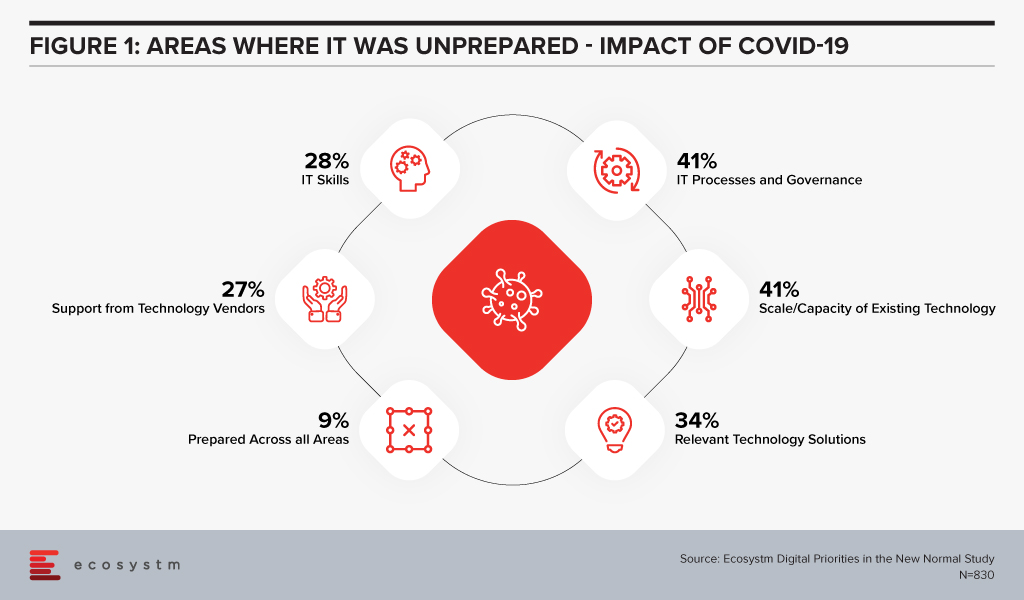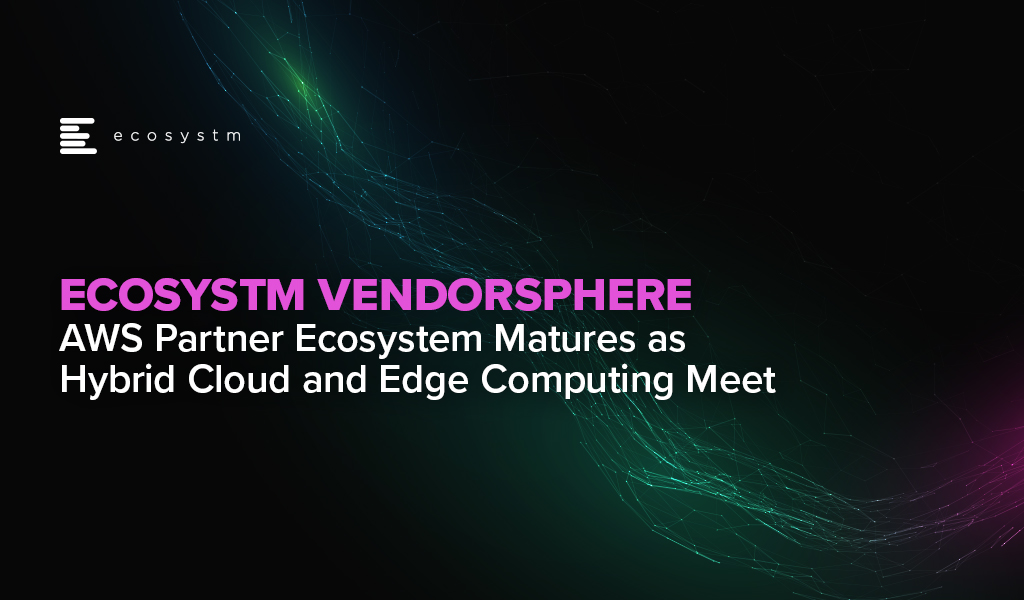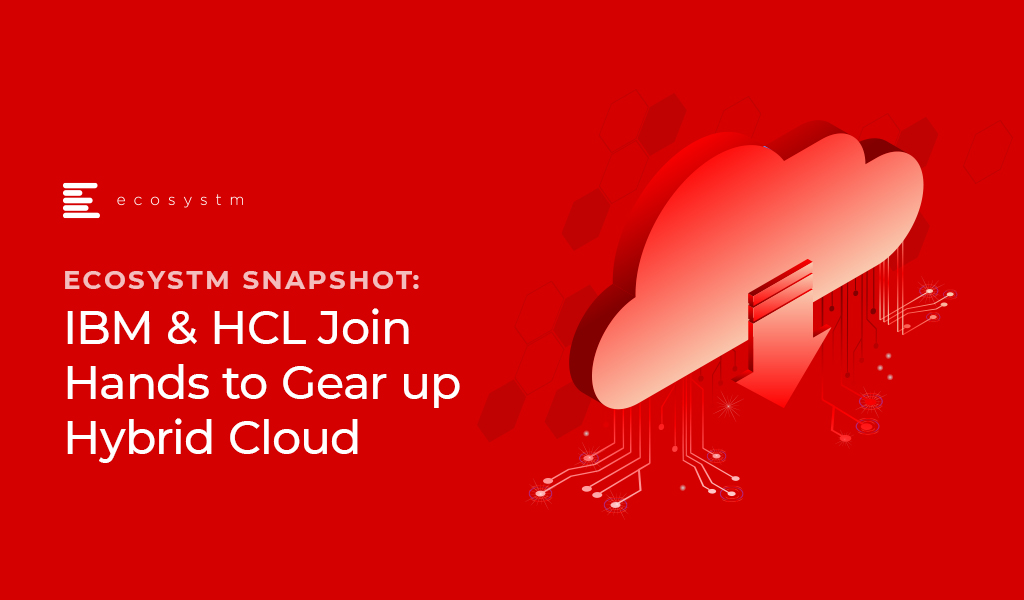AWS has been busy this year moving beyond its stronghold of public cloud to bring infrastructure closer to the enterprise and ultimately to where the end user needs computing most. The global availability of AWS Outposts, essentially AWS on prem, the launch of AWS Wavelength, edge computing embedded in 5G networks, and the extension of the AWS Snow Family of edge devices, have all combined to create a compelling hybrid cloud story. This evolution in AWS’ strategy has required a maturing of its partner ecosystem, building alliances with telcos, co-location providers, and integrators that are all still trying to cement their roles in the hybrid cloud space.
Outposts: The AWS Vision of Hybrid Could
Outposts launched late last year with availability extended to many mature countries in January 2020, in addition to India, Malaysia, New Zealand, Taiwan, Thailand, Israel, Brazil, and Mexico in June. The plug and play system delivers AWS compute and storage from the organisation’s own data centre with a rack that requires only power and network access. The system is managed with the same tools and APIs used in public AWS regions, providing a single hybrid cloud management console. Outposts is targeted primarily at the enterprise space, with the cheapest development and testing units coming in at $7-8k monthly or around $250-280k upfront, depending on the country. Other higher-end configurations include general purpose, compute optimised, graphics optimised, memory optimised, and storage optimised. Monthly installments attract a 10-15% premium over upfront payments.
The launch of hybrid cloud solutions by the major cloud providers and containerised services that allow workloads to be deployed in public and private environments will ensure enterprises are willing to continue their cloud journeys. Security concerns and data residency regulations have prevented many organisations from shifting sensitive workloads to the cloud. Moreover, as industries launch new customer-facing digital services or transform their manufacturing systems, latency will become a concern for some workloads. Hybrid cloud addresses each of these issues by employing either public or private resources depending on the data, location, or capacity needs.
AWS Outposts has two variants, namely Native AWS and VMware Cloud on AWS. Organisations already heavily invested in the AWS ecosystem will likely choose Native AWS and use Outposts as a means of migrating further workloads that require an on-prem environment over to a hybrid cloud environment. More traditional organisations, such as banks, may select the VMware Cloud on AWS variant as a means of retaining the same operational experience that they are accustomed to in their existing VMware environments today.
AWS will rely heavily on its network of enterprise partners for sales, management, and maintenance services for Outposts. AWS partners like Accenture, HCL, TCS, Deloitte, DXC, NTT Data, and Rackspace have all shifted in recent years to deliver the full stack from infrastructure to application services and now have a ready-made hybrid cloud platform to migrate on to. AWS is also in the process of recruiting co-location partners to serve Outposts from third-party data centres, providing another option that enterprises are familiar with. This will likely come as welcomed news for co-location providers that have been fighting uphill against AWS.
Wavelength: Embedding Cloud in 5G Networks
Another major announcement in AWS’s drive towards hybrid cloud and edge computing was the general availability of Wavelength in August. This service embeds AWS into the data centres of 5G network operators to reduce latency and bandwidth transmission. Data for applications residing in Wavelength Zones is not required to leave the 5G network. AWS is looking to attract mobile operators, who previously might have viewed it as a competitor while the public cloud space was more fragmented and open to telcos. These partnerships are another example of AWS expanding its ecosystem. Current Wavelength partners are Verizon, Vodafone Business, KDDI, and SK Telecom. With their own take on edge services, Microsoft has signed up the likes of Telstra and NTT Communications, while Google has enlisted AT&T and Telefónica. Edge computing in 5G networks will be the next battleground for cloud supremacy.
On a smaller scale, AWS has released new additions to its Snow Family of edge computing devices. AWS Snowcone is a compact, rugged computing device designed to process data on the network edge where cloud services may be insufficient. The processed data can then be uploaded to the cloud either through a network connection or by physically shipping the device to AWS. The convergence of IT and OT will drive the need for these edge devices in remote locations, such as mines and farms and in mobile environments for the healthcare and transportation industries.
Competitive Strategies
Openness will become a critical difference between how cloud platform providers approach hybrid cloud and edge computing. While AWS is certainly extending its ecosystem to include partners that it previously would have viewed as rivals, as the dominant player, it will be less compelled to open up to its largest competitors. If it can control the full system from ultraportable device, to $1M server rack, to cloud management console, it can potentially deliver a better experience for clients. Conversely, the likes of Microsoft, Google, and IBM, all need to be willing to provide whichever service the client desires, whether that is an end-to-end solution, management of a competitor’s cloud service, or an OEM’s hardware.

As organisations come to terms with the “new normal”, technology companies are presenting unique offerings to help them tide over the situation and lead them towards economic and social recovery. These companies are also leading from the front and demonstrating how to transform with agility and pace – evolving their business and delivery models.
Organisations are dependent on digital technologies more than ever before. In 2020, we have already seen unprecedented and rapid adoption of technologies such as audio and video conferencing, collaboration tools to engage with employees and clients, contactless services, and AI/automation. This will have a wider impact on the technology industry, community, and redefining the workplace of the future.
Ecosystm Principal Advisor, Tim Sheedy hosted a virtual roundtable with business leaders from some of the world’s largest technology service providers to discuss how they managed the challenges during the pandemic; and the measures they implemented to support not only their business operations and working environment, but also to help their customers negotiate these difficult times.
The Role of Technology During the COVID-19 Crisis
When the COVID-19 crisis hit, IT teams found themselves largely unprepared. Ecosystm research finds that only 9% of organisations considered their IT fully prepared for the changes that had to be implemented (Figure 1). More than a third did not have the right technology solutions and 41% were unprepared for the scale of the changes required and the capacity to extend the existing technology to meet client and employee needs. 
While 27% of organisations felt that they needed more support from their IT provider, further questioning reveals that only 4% switched technology providers for better support during these difficult times. Organisations are looking to their technology partners for guidance, as they negotiate the new normal.
Here are some of the discussion points that emerged in the conversation with the technology providers.
Business Continuity Planning is Still Evolving
One of the early impacts on businesses was due to their dependence on outsourced services and offshore models. Several concerns emerged – how could their provider continue to operate offsite; would they be able to access the network remotely; how should fully remote teams be managed and so on. In addition to this, there were other challenges such as supply chain disruptions and a sudden change in business. Even technology providers felt that they were navigating uncharted territory.
“Remote project delivery is not new, it’s been going on for a few years; but I think that there’s been a lot of non-believers out there. This experience has moved a lot of those non-believers to the believer category. A lot of our delivery can be done from home – think of the savings of time and money that can be realised through this.” – Andrew Campbell, Partner Asia Pacific for Talent and Transformation, IBM
Moreover, the rising workload and client expectation has led businesses to move towards exploring automation and AI.
“The thing that is changing now is, when we approach a new opportunity or an existing customer with a new requirement, we look at using automation. Typically, when you go in to design a solution you always think of the human aspect. We’re working very hard to move our thinking to automation first and then supplementing it with the human side as a backup.” – Michael Horton, Executive VP, ANZ, HCL Technologies
Data has become paramount in this time of crisis. The right use of data is helping organisations fulfil customer requirements, enhance their experience, and optimise services and products.
“Those organisations that have a good understanding of the data within their business, and how that data can be used to understand the impact on their business, are starting to have much better clarity on future requirements.” – Peter Lawther, Oceania Regional Technology Officer, Fujitsu
Organisations should take the learnings from managing this situation to keep evolving their business continuity plans – keeping in mind individual business needs and growth and business strategies.
Having the Right Infrastructure Means Employees are Productive
The lockdown and social distancing measures forced organisations to focus on the infrastructure that can support their remote and hybrid work environment.
“Before the pandemic around 20-30% of our staff logged on to a VPN, but with remote working, all of a sudden, we were at 90%.” – Lawther
The adoption of digital tools and online infrastructure led businesses to re-think how they were delivering their services. While some organisations had the tools, governance and the protocols in place, there is still a long way to go for organisations to solve their infrastructure and networking challenges.
“It gets down to the quality of the equipment that the staff use – which ranges from decent laptops, phones, and network connections. If you don’t have that now, people cannot work effectively.” – Horton
Several of these organisations, focused on ergonomics as well, when evaluating their employees’ infrastructural needs when working from home. This extra focus on infrastructural needs – with the employees firmly on their mind – ensured that there was minimal impact on delivery.
Caring for Your People is More Important than Ever
The pandemic has changed the way people work, socialise, and interact. While this appears to have become the new norm, adjusting to it can create emotional stress. Simultaneously, as organisations focus on survival and recovery, workloads have increased. Employees are working extended hours, without taking adequate hours. There is an immediate need to involve organisations’ HR practices in evaluating the emotional well-being of employees and finding better ways to engage with remote staff, to reduce stress.
“A key aspect of handling the crisis has been empathy, transparency and engagement with employees. In a business environment, we have all sorts of teams, cultures, clients, and so on. The common thread in this model is that everyone’s just become a lot friendlier, more empathic, more transparent.” – Sumit Nurpuri, COO, SE Asia Hong Kong and Taiwan, Capgemini
Organisations will have to be innovative in the way they manage these people challenges. For example, a common problem that has emerged is employees attending meetings, with interruptions from family, especially children.
“One of the things that we did as a part of our team meetings is that we assigned tasks to children at the beginning of the call and in the last few minutes, the children presented back to the teams on what they’ve been up to. It was a mechanism for us to make sure that we were involving our staff and understanding their current situation – and trying to make it as easy for them to work, as possible.” – Lawther
Taking the Opportunity to Drive Positive Outcomes
The other aspect businesses are trying to overcome is meeting the rising expectations of clients. This has led them to focus on skills training, mostly delivered through e-learning platforms. Organisations find that this has translated into increased employee performance and a future-ready workforce.
The crisis disrupted economies and societies across the globe, with business and industry coming to a standstill in most countries. Unexpected business benefits emerged from the necessity to comply with country regulations. By and large, employees have been more productive. Also, many organisations re-evaluated their commercial property requirements and many were able to reduce expenses on office rentals (for many this will not be immediate, but there is a future potentiality). Similarly, there were other areas where businesses saw reduced expenses – operational costs such as equipment maintenance and travel expenses.
“When you start global projects and global implementations, you typically do some kind of global design work and maybe fly in people from all over the world, typically to a centralised location. This has changed to virtual meetings and collaborative interactions on online global design. The amount of time and money that was saved – that would typically be spent on people traveling to manage these global design workshops – was great” – Campbell
Most organisations, across industries, will have to make considerable changes to their IT environment. The Ecosystm Digital Priorities in the New Normal study finds that 70% expect considerable to significant changes to their IT environment, going forward. Technology providers will remain a significant partner in organisations’ journey to transformation, recovery and success.

As a technology analyst I have followed HCL for many years – and their capabilities have changed over that time – particularly in Australia and New Zealand. When they entered the ANZ market they were somewhat unique – an Indian IT Service provider with views and opinions. One who was not just good at meeting RFP requirements and delivering technology projects, but also individuals who were empowered to challenge the status quo in their clients – to challenge clients to be better. But as several large managed services providers lost their way in ANZ, HCL stepped in and – for a number of years – became all about outsourcing and managed services. They grew their business significantly, but what seemed to be lost was that factor that set them apart. In focusing on good delivery they seemed to lose their differentiator.
However, I recently spent a few days with HCL and their clients in Adelaide and I can report that they are back. They are winning digital transformation deals. They are driving a technology industry agenda and are becoming an important force in the education and evolution of the high tech sector in Australia and New Zealand. Adelaide was chosen for the event as HCL wanted to showcase how they are making real investments in the local market, and how they are helping South Australia to transform itself and create new job opportunities both in Adelaide and in the regions. Their managed services contract with Elders is a great starting point for them – and in meeting and interviewing the Elders stakeholders, it is clear that it is a partnership – HCL has collocated to ensure that the HCL staff are side-by-side with the Elders teams – and they are doing a good job in driving innovation into the Elders business.
The Cricket Australia digital transformation contract is a big deal, and is really a great indicator of their capabilities. HCL won the contract from Accenture – showing that they can compete against and beat the best (Accenture is the biggest IT services provider in Australia today – and for good reason). Building off their success with Manchester United, HCL has won another important digital transformation deal with a global sporting brand. Personally, as a fan of the Australian women’s and men’s cricket team, I look forward to engaging with the fruits of their endeavours soon!
The main take away from the time spent with HCL is that they are growing their business here in Australia and across the entire Asia Pacific region – and that the growth is coming from many areas – not just traditional outsourcing contracts but also across the spectrum of digital transformation. Importantly they are also taking responsibility for that growth – bringing the market along with them as they look to help educate and employ the next generation of technology professionals.
HCL also seem to have mastered the ability to both respond to the standardised processes of the sourcing deal advisors as well as stand out as an individual company. While deal advisors play an important role, I often hear clients say that they can sometimes take the personality out of a deal. They bring comparisons between vendors to standard and measurable metrics – but you sign a deal with a person, you negotiate with a person, and it is people who deliver the solution. Winning deals is not just about proving the ability to deliver, but also convincing the client that they want or need to partner with the IT services business. Based on client feedback, HCL is mastering both sides of this process, and are earning the right to be considered in a broader range of deals.
If you are dealing with HCL, it may also warrant looking beyond the traditional measurable metrics. Speak to their leadership team both locally and globally, especially given their emphasis to bring in local leadership in their key markets . Get a feel for the culture of the company and whether or not it matches your culture or even sometimes challenges your business to be better. Services deals are ultimately about people, so spend time with the people – challenge them to come to the party. Put them under stress and see how they respond, as it is typically the hard times that define the longer term success of a partnership.
IBM is aggressively pushing their products and services with multiple partnerships being announced over the last few months.
In the recent announcement, HCL Technologies and IBM stated that they were collaborating to assist organisations on their hybrid cloud journey. The joint services will offer seamless integration of their customers’ cloud across any private, public and on-premise environment. The hybrid cloud approach is aimed at eliminating the concerns of mixing the different cloud environments yet maintaining scalability and security. HCL will feature new refactoring and re-platforming services to allow organisations to migrate, integrate and manage apps and workloads on IBM’s cloud.
Speaking on the subject, Phil Hassey, Principal Advisor ,Ecosystm, thinks that “the most attractive aspect of this collaboration is that it will bring together the best of both vendors. IBM has such a long history in Infrastructure Management, whereas HCL has – most particularly in the past 5 years or so – built up capability in the space.”
The good news for tech buyers is that they will derive benefits from HCL’s customer knowledge and hands-on approach with the combination of IBM technology, cloud and – of course – Watson. HCL has acquired significant IBM assets that they could extract more value from. The infusion of AI into hybrid cloud will lead to increased automation, improved outcomes and effective investments by clients.
When we look at the individual benefits to IBM and HCL from this deal, Hassey says, “IBM needs new customer logos and HCL can provide that. Conversely, IBM can provide larger enterprise clients to HCL. However, it is not a straight customer swap, they will work to maintain relationships independently.”
IBM is pushing hard towards their plans to capture more market with many big deals announced recently – and undoubtedly many more yet to happen. It is well-documented that IBM has gone through many reinventions but is still deeply entrenched in many of the world’s largest organisations. “IBM is such a large machine that different aspects and offerings are always operating at different speeds”, says Phil. “It needs to accelerate the uptake of Watson, and Watson being available on any cloud will help this.”
The hybrid cloud is desperately looking for big scale integration and transformation capabilities, so this agreement between HCL and IBM will hopefully help kickstart that.





